Your handy 1965–67 Shelby 427 Cobra buyer’s guide
You can’t just pull a Shelby 427 Cobra out of a barn like you can with most cars of its era. That’s because legitimate 427 Cobras—not the numerous reproductions—are extremely rare, unbelievably desirable, and priced accordingly. So rest assured: We are not here to convince you to buy a 427 Cobra, especially since you need no such motivation. Instead, we’re here to detail the things you should know if you were in the market.
1965 (Competition and S/C Cobras)
The original AC Cobra, be it in Mark I or Mark II design, was never intended to handle the size and power of Ford’s 427 FE V-8 engine. And it didn’t necessarily need the grunt, until the 1963 Corvette Grand Sport entered the scene with an aluminum 377-cubic-inch mill boasting close to 500 horsepower. The 1963 Nassau Speed Week was the first time the Corvette Grand Sports went against with Cobras, and the Bahamian Battle had one clear winner. According to the World Registry of Cobras and GT40s, “It was a public embarrassment that [Carroll] Shelby would not forget.”
Luckily for Shelby and the Cobra, there was wind of an aluminum Ford 390-cu-in V-8 big block, which lit the fire but ultimately disappeared when the experimental engine was no longer available to him. One Cobra, chassis number CSX2196, became the big-block test mule with an iron 427-cu-in engine shoehorned into the Mark II Cobra by Ken Miles and the crew at Shelby American. In testing it was met with disastrous results. Ken Miles found disappointing handling, overheating concerns, and questionable durability. (Remember the original AC Ace was designed for a 150-hp engine). In the end, this first prototype was called “The Turd” because of that experience, but the cast was set and everyone began work on redesigning the Cobra to handle its new big-block engine.
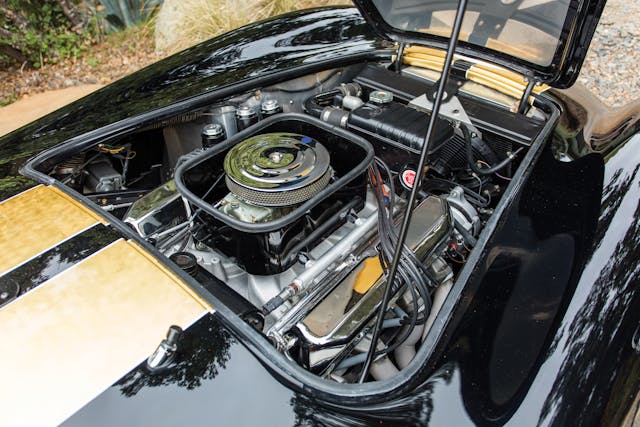
Enter the Mark III Cobra for 1965, initially made as Competition Cobras and the subsequent 427 S/C (Semi-Competition) examples. All Competition and S/C Cobras were powered by the “side oiler” Ford FE 427-cu-in V-8 with a 780 cfm Holley four-barrel carburetor, making 425 horsepower and 480 lb-ft (485 horsepower in S/C models), though roughly 100 units (chassis numbers CSX3200 through CSX3300 approximately) received Ford’s 428-cu-in FE V-8. All were equipped with four-speed manual transmissions, though Carroll Shelby swapped C6 automatics into four cars after the fact. These big motors required big changes: a 5-inch wider frame and larger diameter (4 inches versus 3) main chassis tubing. All Mark III Cobras sported a coil-spring suspension, a significant improvement over the older, transverse leaf-spring setup. While exterior appearances may seem similar, these changes and needs (like a bigger grille for more engine cooling) merited a significantly different body for the 427 Cobra. The change was so radical that only the hood, trunk, and windshield interchange with the earlier leaf-spring Cobras.

The World Registry of Cobras and GT40s notes that only 51 units of the 427 Cobra were made by April of 1965, and only 52 by July of the same year. While some were sold to SCCA racers and exported to Europe, most 427 Cobras by this point were parked behind Shelby American’s headquarters, as Carroll Shelby was committed to Ford GT development until November 1965. The Registry also says that only “16 of the 50 ‘production’ 427 Cobra competition roadsters had been sold” by November.
Some noteworthy 1965 Cobras found in the Registry include the first unit (CSX3001) that went to Ford’s design studio as a rolling chassis, received a custom body courtesy of Design VP Gene Bordinat, and ironically was fitted with a small-block Ford V-8 instead of a 427. The second (CSX3002) was a prototype made before the Mark III body was locked down, fitted with Mark II Cobra body and interior parts, and used as a racing test mule before being rented by MGM Studios for the movie Spinout, starring Elvis Presley.

Future 427 Cobras (CSX3003 through 26 and CSX3028 through 53) were Competition Cobras, with the noticeable exception of CSX3027, which was sold as a chassis only and shipped to Radford Coach Builders. The English coachbuilder intended to make a Cobra coupe with input from Pete Brock. But as The Complete Book of Shelby Automobiles: Cobras, Mustangs and Super Snakes mentions, their work was a “bonus” to Ford as a thank you for securing the contract to trim the interiors of the Ford GT40.
Unfortunately CSX3027 was scrapped, and as Pete Brock said: “To give you some idea how bad it was, the middle was eight inches wider than it was supposed to be! As it turned out, there was no one there who knew how to do race car fabrication as we do it here in California or in Italy. They just put the thing together with a 1/4-inch steel plate and giant 1 1/2-inch steel tubing, things that were just totally unsuitable for the purpose. Carroll asked what I thought and I answered that we should just scrap it.” CSX3027 was claimed to be resurrected in the 1970s, but its owners have yet to verify its originality.
No matter, this car was replaced with CSX3054, which was shipped to Harold Radford Coachbuilders with the same mission. Sadly it too was a rolling disaster, as The Complete Book of Shelby Automobiles notes that even with Pete Brock’s guidance, a “combination of bad luck and setbacks” meant it was shipped as an incomplete vehicle to Shelby American, where it remained unfinished due to conflict of interest with the Ford GT program. CSX3054 remained in this state until the sixth owner undertook the project in 1979 and completed it in 1981. While CSX3054 was used in vintage racing, The Complete Book of Shelby Automobiles suggests that “one can only assume it is not the fully polished product it would have been had the likes of Phil Remington sorted it using input from drivers like Ken Miles.”

Two final 1965 Cobra chassis of note were CSX3055 (Willment Coupe, right-hand-drive) and CSX 3063 (Ghia show car). The Willment coupe was purchased by John Willment as a bare chassis, with the intention of grafting a discarded Ghia Supersonic body sourced from an English scrapyard for £500. Willment lost interest in the completed car and sold it in the British publication Motor Sport as a “1967 Fiat Cobra.” While CSX3055 wore Italian coachwork of dubious origin, CSX 3063 was shipped to Carrozzeria Ghia in June 1965 with a 6-inch wheelbase extension and an automatic transmission. Ghia added an elegant roadster body and was reported to have numerous enhancements, including air conditioning. Sadly, CSX3055’s whereabouts are shrouded in controversy to this day.
Thanks to Shelby American missing its FIA certification for the 1965 race season, the 427 Competition Cobra’s lofty $9500 asking price, and the limited appeal of a top-tier race car, most examples sat unsold at Shelby American. Charles Beidler, Shelby American’s Eastern sales representative, got the idea to make a 427 “Semi-Competition”(427 S/C) Cobra that can be sold to the general public. They were also significantly cheaper even with changes like a full windshield, detuned engine, electric cooling fans, Goodyear Blue Dot street tires, and exhaust baffles to make them street legal. As the World Registry of Cobras and GT40s states, Beidler’s notion worked because 28 Cobras were sold in the S/C model configuration. While this notion certainly worked, it showed the 427 Cobra’s future as a production vehicle wasn’t terribly bright.
1966–67 (Street Cobras)

This was the year for 427 Cobra street car production, with CSX line numbers starting at 3101 and ending with 3360. The first street Cobra was a test mule, and its underbody exhaust (opposed to the side pipes of Competition and S/C Cobras) was plagued with excessive heat radiating into the cabin. This problem was addressed with ventilation ducting, while other revisions to the dipstick, throttle linkage, driver’s side exhaust manifold, speedometers, and electric fans were made. The addition of license plate mounts, emblems, glove box, revised gauges, door pockets, side curtains (stored behind the seats) sun visors, bumperettes, and positive crankcase ventilation systems were also added to the street Cobra. Earlier street cars had a 427 “center oiler” V-8 with two Holley carburetors. While the completed 427 Cobra was to be delivered to Ford dealers by September 1965, supply chain issues with both the Halibrand wheels and 427 engines caused both delays and insightful workarounds.
In response, Peter Brock designed a bespoke “Sunburst wheel” produced by Kelsey-Hayes, and Ford’s cheaper ($320 versus $730) 428-cu-in FE Police Interceptor engine was added to the parts bin to ensure a smoother production run. Approximately 100 of these engines were fitted to 427 Cobras, around the time of production for CSX3200 to 3300. The World Registry of Cobras and GT40s notes that Ford engineer Fred Goodell joined Shelby American in December 1966 and made it a priority to phase out the 428 and go back to a 427. The last 54 units received a 427 with a single four-barrel carburetor thanks to Goodell’s input.
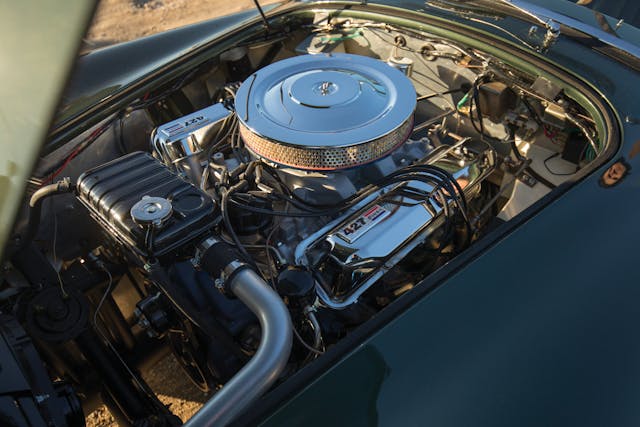
Four of these street Cobras came equipped with automatic transmissions, two of which (CSX3303 for Bill Cosby and CSX3015 for Carroll Shelby) were also fitted with twin Paxton superchargers and given the title “Super Snake.” The supercharged Cobra intended for Cosby became part of his stand-up routine as he found it too dangerous for his tastes. The World Registry of Cobras and GT40s also reported that the wife of Cosby’s manager drove CSX3015 for months, but it was subsequently returned to Shelby American and sold to Tony Maxey, who later fell victim to a one car fatal accident when the throttle stuck open. CSX3015 was scrapped and sold for parts but finally arose from the ashes in the 1970s. The other Super Snake lived a far less controversial life with Shelby at the wheel and sold for 5.5 million dollars earlier this year.

Less radical changes happened during the street Cobra’s production run, including the deletion of an air scoop for the engine oil cooler after the 200th unit was produced. That was beneficial as the scoop was damaged by parking curbs and because oil coolers were not available on street Cobras. The first 54 units (CSX3001 through 55) wore the competition-spec wide rear fenders, but CSX3125 through 58 were made with narrow rear fenders, designed to be more attractive with the street version’s two-inch-narrower, 7.5-inch-wide rear wheels. These are now known as the “narrow hip” Cobras, but in period were ultimately killed off because of the significant additional costs associated with producing two different bodies for such a limited production vehicle. The last 200 or so units reverted back to wide rear fenders for this reason. Finally, the supply of rectangular tail lights ran out after the first 100 units, so a switch to round taillights was made to improve light output and safety.

Colors for the 427 Cobra street cars (Competition and S/Cs were delivered unpainted) included Rangoon Red (31 percent of production), Ivy Green (22 percent), Guardsman Blue (17 percent), Silver (10 percent), White (9 percent), Black (18 percent), Charcoal (0.004 percent), and unpainted (4 percent). Options were indeed available, but the list was sparse: radio, front and rear antiroll bars, roll hoop (chassis), hood scoop, and magnesium wheels. While they were included in factory sales invoices, the World Registry of Cobras and GT40s indicates most items were dealer installed.
Production of the 427 Cobra ended unceremoniously with CSX3360 on December 14th, 1966. This example, like many street Cobras of the same model year, was sold to a Ford dealership in the following calendar year (October 26, 1967 for the final unit). The World Registry of Cobras and GT40s concludes that Cobra production ended due to the effect of upcoming regulations on the Cobra’s DNA, suggesting “any attempts to emasculate the car in order to meet federal emission requirements and safety regulations would result in something other than a Cobra.”
But there is more to the story, as the Cobra’s competition was growing increasingly more powerful and desirable: The C2 Corvette was available with a variety of 427 engines, better fitting roof/window options, heating, and air conditioning all for less money. Considering the competition alongside Ford’s controlling interest of Shelby American by 1967, and it’s clear that the aging competition-bred Cobra, despite still being one of the fastest things on four wheels, wasn’t fit for the impending future of automobile or for the government’s increasing oversight of safety and emissions standards.
1991–92 (Completion Cobras)
Except not so much! Things got interesting for the 427 Cobras, as their skyrocketing values meant this chapter isn’t quite over. That’s because Shelby American made less than the 100 Competition and S/C Cobras it had planned for in 1965, and The Complete Book of Shelby Automobiles estimates that roughly 40 serial numbers remained unused. This book also says that “By 1990, 427 Cobras had gone from being $75,000 cars to being worth over $500,000 in less than 24 months. And by 1991, at its peak, Competition Cobras were being touted as million-dollar cars.” This was the background in which Carroll Shelby pounced on his next opportunity.
A rumor was started that Shelby had long-lost Cobras in storage, though The Complete Book of Shelby Automobiles suggests this was impossible considering the threadbare budgets of both Shelby American and AC Cars at the time. No matter, Carroll Shelby partnered with noted Cobra restorer Mike McCluskey to make 427 Cobra S/C “Completion Cars” that used 1965 serial numbers, with an asking price of $500,000. This first Competition Cobra was produced in June 1991, but word got out regarding the provenance and legitimacy of these chassis. And then Paul Dean of the Los Angeles Times wrote an article that blew the lid off Carroll Shelby’s plan.
In the article, Brian Angliss, head of AC Cars, was quoted as saying that “Shelby asked him to remanufacture a batch of Cobra chassis and ship them into the United States labeled as ‘washing machine parts.'” That, paired with the overwhelming number of questions raised by Dean’s Los Angeles Times article, led to the California DMV mandating all Completion Cobras as not street legal. The Complete Book of Shelby Automobiles also notes the “abrupt bursting of the collector car bubble” at this time meant the Completion Cobras were also more expensive to buy than a real one. These two factors ensured that only 9 of the 427 Cobra S/C “Completion Cars” ever made production, with unit numbers CSX3056 through 62, CSX3065, and CSX3071.
Before you buy
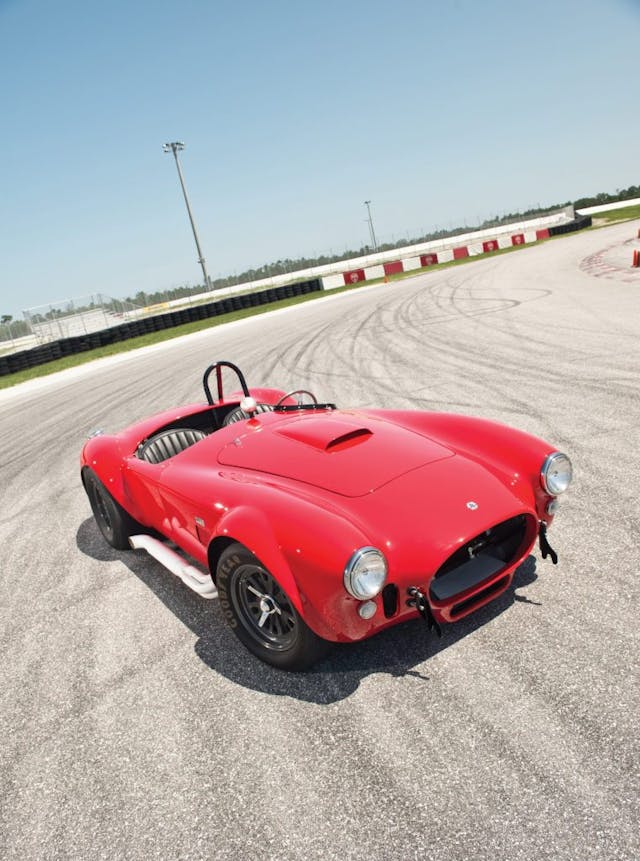
Think you found a legitimate 427 Cobra? Your best bet is to contact the Shelby American Automobile Club to verify what you see for sale actually exists in its registry. If so, get ready for a bidding war and open up your wallet nice and wide for this transaction.
The World Registry of Cobras and GT40s was heavily referenced in this article for good reason, as it has extensive documentation on every serial number made. It proves the point that you aren’t likely to find a legitimate 427 Cobra in the same way that you will a 1965 to ’66 Mustang GT350. When a Cobra does pop up for sale, it will likely exchange hands privately or go through an extensive pre-purchase inspection before hitting the auction block. Getting a good deal on a Cobra that needs some reconditioning is unlikely, but least you get some peace of mind when you pony up the big bucks for a legitimate 427 Cobra.
But if there’s one thing the pages of the World Registry of Cobras and GT40s can teach us, it is that people will regularly try to pass off Cobra clones as originals. That said, Shelby authorized Cobra “Continuation Cars” in response to the Cobra kit cars that littered the automotive scene. These Continuation Cobras were initially based on the 427 Cobra (with serial numbers starting at CSX4000, 6000, 7000, 8000, 1000) and are far more likely to be found for sale in traditional classic-car channels.
Valuation
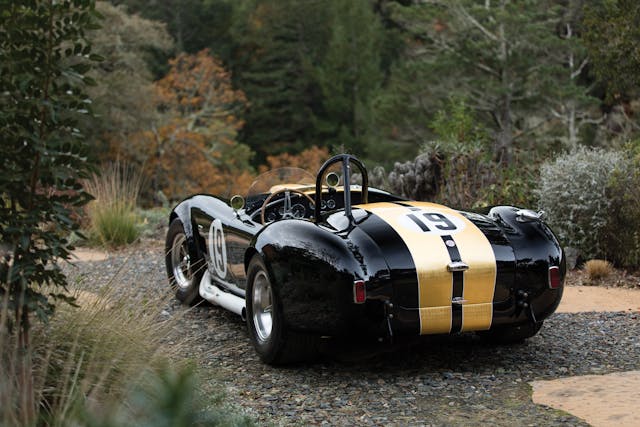
Values for 427 Cobras went up significantly during the first half of the 2010s, but have been relatively quiet since 2015. That said, for the latest values for 427 Cobras, please click here. Aside from the aforementioned CSX3015 Super Snake selling for 5.5 million dollars this year, most examples in #1 condition trade for between 1 to 2 million dollars. Even 427 Cobras in #4 condition (the worst condition rating) are still worth at least $750,000, proving that the demand for such a rare sports car is likely to always outstrip the supply.
Ready to buy the 427 Cobra of your dreams? Hats off to you, and we wish you the best. Not only are these big-block Cobras a nearly priceless piece of automotive history, almost every example produced by Shelby American has an interesting story to go with. For those that can’t afford a real Cobra, the reproduction and Shelby Continuation Cobras are your best choice for all the performance at a far more appealing price point.
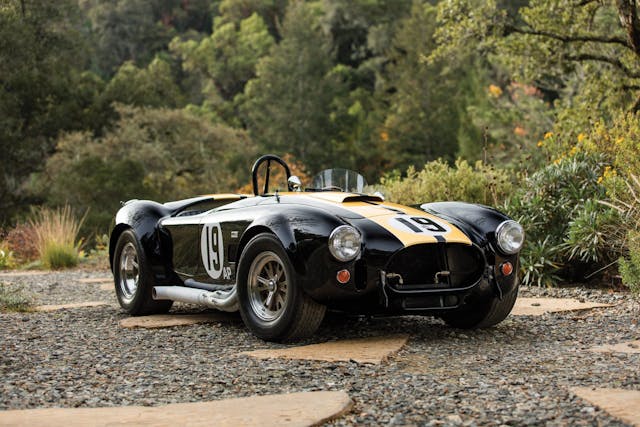
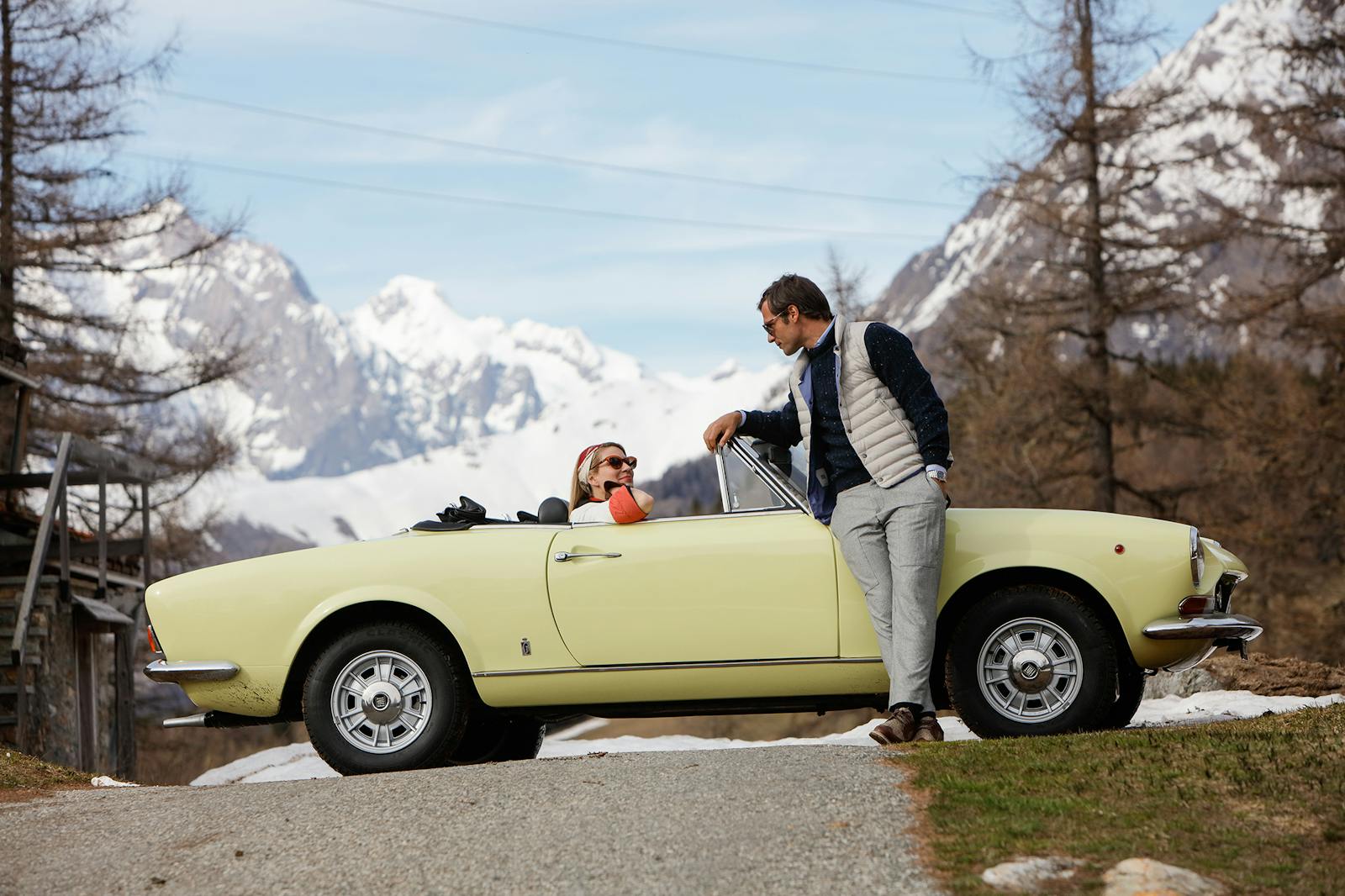

Having just been discharged from the USMC after returning from Vietnam in late 1966, I had met a lady, (and got married). We were trying to establish ourselves in San Diego, California.
Having been an OK mechanic before my service, I got a job at Jack Hill Texaco, on Pearl and Gerard in La Jolla, California, as their resident repair person. We had dealings with Seaside Buick for minor service and gas in their new cars.
A salesman from Seaside came into the station driving a 427 Cobra, (don’t remember the year) he had acquired and was trying to sell for $7,000. I of course had no clue what I was looking at and on $2.25 an hour could ill afford such a cost. I could only drool. Great experience with no regrets as it opened the door for me on Shelby Cobra and his great talents.
I recently insured my Vintage vehicle, (not a Cobra, still can’t afford one) in Utah through Hagarty, and am reading about Mr. Shelby in your fine magazine that comes with the insurance.
Great stories on Carol Shelby, both here and your mag. Great article on flathead Fords as well, (in your magazine). Flatheads, ahhh, that’s something I could afford, (23 bucket T, 27 T, 28 Model A, 1950 Ford 4 door). Of course all with flathead V 8’s with Stromberg 97 carbs, Isky 3/4 or full race cams. Edelbrock heads, Mickey Mouse Thompson pistons, relieved and ported, bla bla, bla. I think we got close to 200 Hp sometimes. At least in our minds. I tried to make my 27 look like the one on page, (I believe 109) of your mag), but it never did. Made a good rat rod in my youth, however.
We also raced a 145 inboard hydroplane with a flathead 60 in the local APBA races.
Thanks for the interesting articles.